18 Best Garden Edging Ideas for Your Home
Separate your garden space sensibly and stylishly with good edging
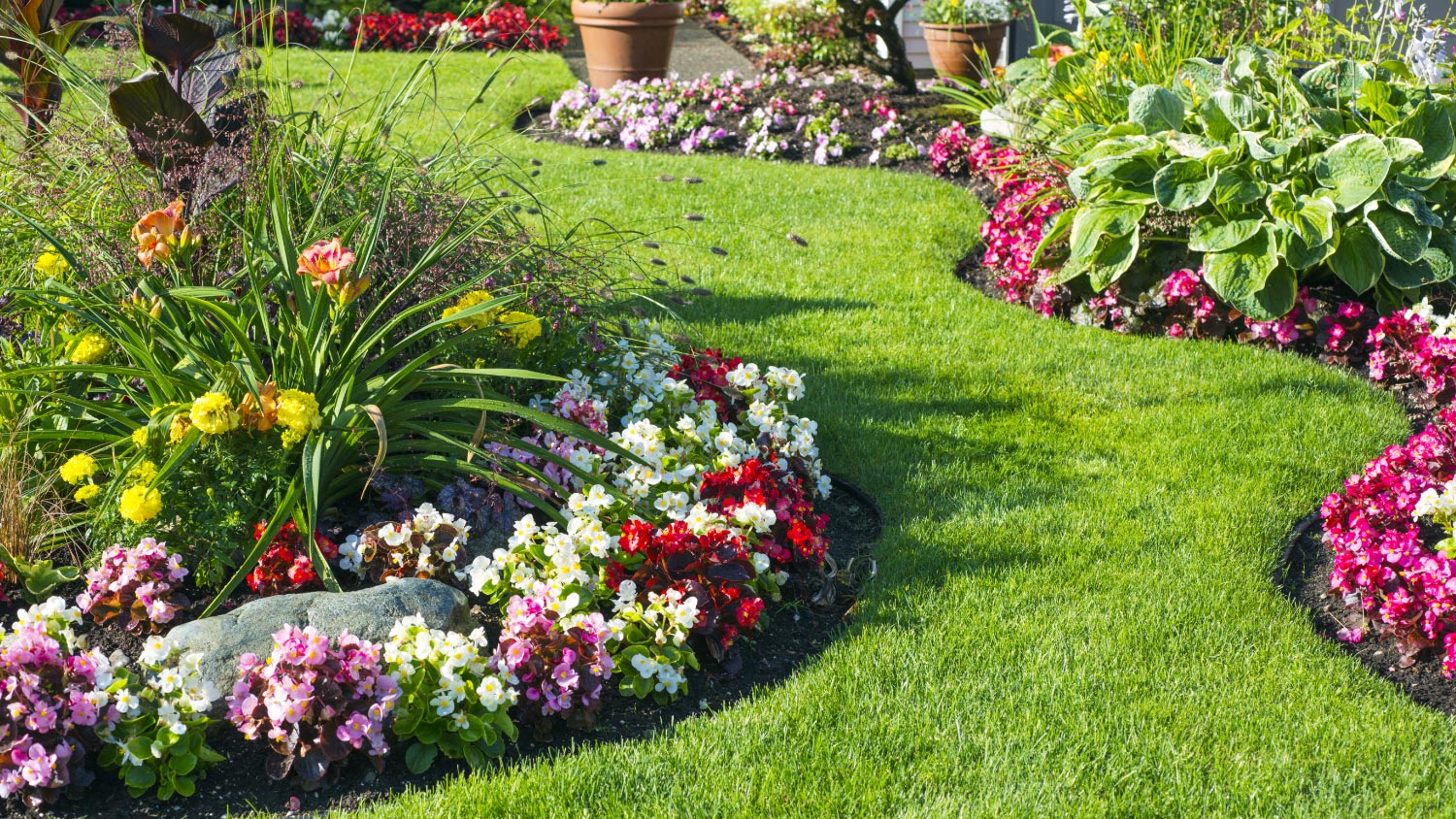

Edging has a multitude of benefits in garden landscapes. It can effectively blend different elements within the design, define specific areas, ensure a neat border, and improve the space's overall aesthetic. It also has practical advantages by providing a barrier between lawns and flower, gravel, or mulch border and helps stop weeds from creeping into flower beds.
There are many different types of landscape edging, and design possibilities are endless. What you select will depend on your desired aesthetic, practical applications, and budget. Check out these creative garden edging ideas if you’re looking for inspiration.
1. Corten Steel Curves

Corten steel is arguably one of the most on-trend, contemporary garden edging options right now. It’s durable, low-maintenance, and eye-catching. Aga Tomaszek uses it to great effect in her impressive self-made, cozy, tropical-vibes backyard. The curved, sweeping lawn edging also contrasts beautifully with the pebble pathway. And while working with some metals is not for beginner-DIY homeowners, many steel and aluminum strips are pliable enough to manage on your own. Consider learning how to install metal landscape edging yourself to cut costs.
2. Learn About Artificial Turf Edging

There are many pros and cons of artificial grass, but no matter how you feel about the look, edging can bring your yard to the next level. Utilize some of the same materials to edge your artificial turf that you would use for natural grass. Wood, metal, plastic, and mulch all pair well with turf, though hardscape elements such as a stone garden or stone slabs and walkways look particularly clean. The trick is to incorporate these items into your design as you measure and cut your artificial turf during installation.
3. Edgy Shade Plants
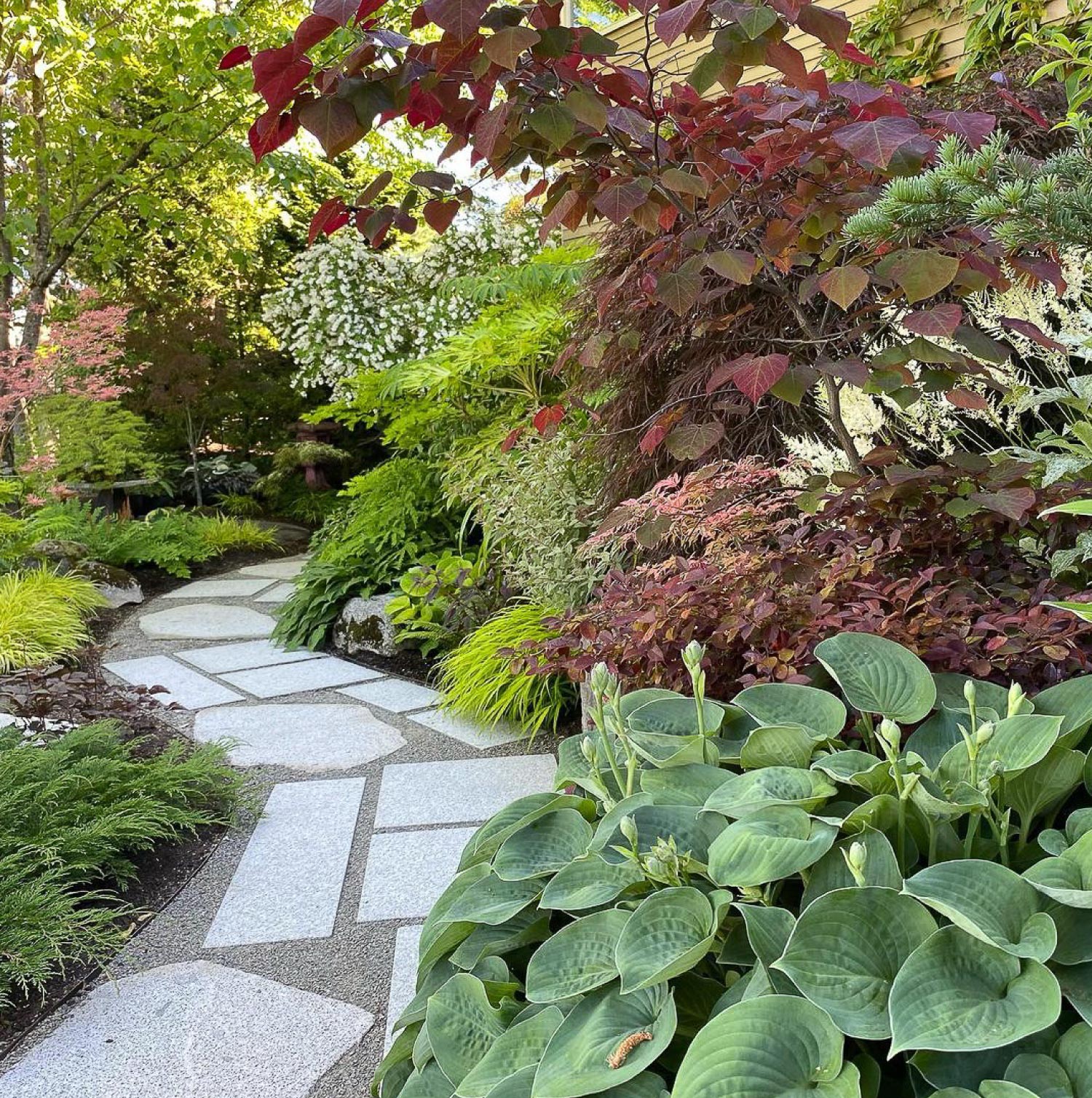
Camille Paulsen has designed a striking side garden. Shade-loving plants and shrubs with abundant foliage edge the curved pathway. This creates effective contrasting texture and colors. Learning how to edge a lawn is easiest for DIYers when you start with natural landscape elements such as these. While stone, concrete, and wood edging are stronger, it's best to call a professional.
4. Surround Sloped Gardens
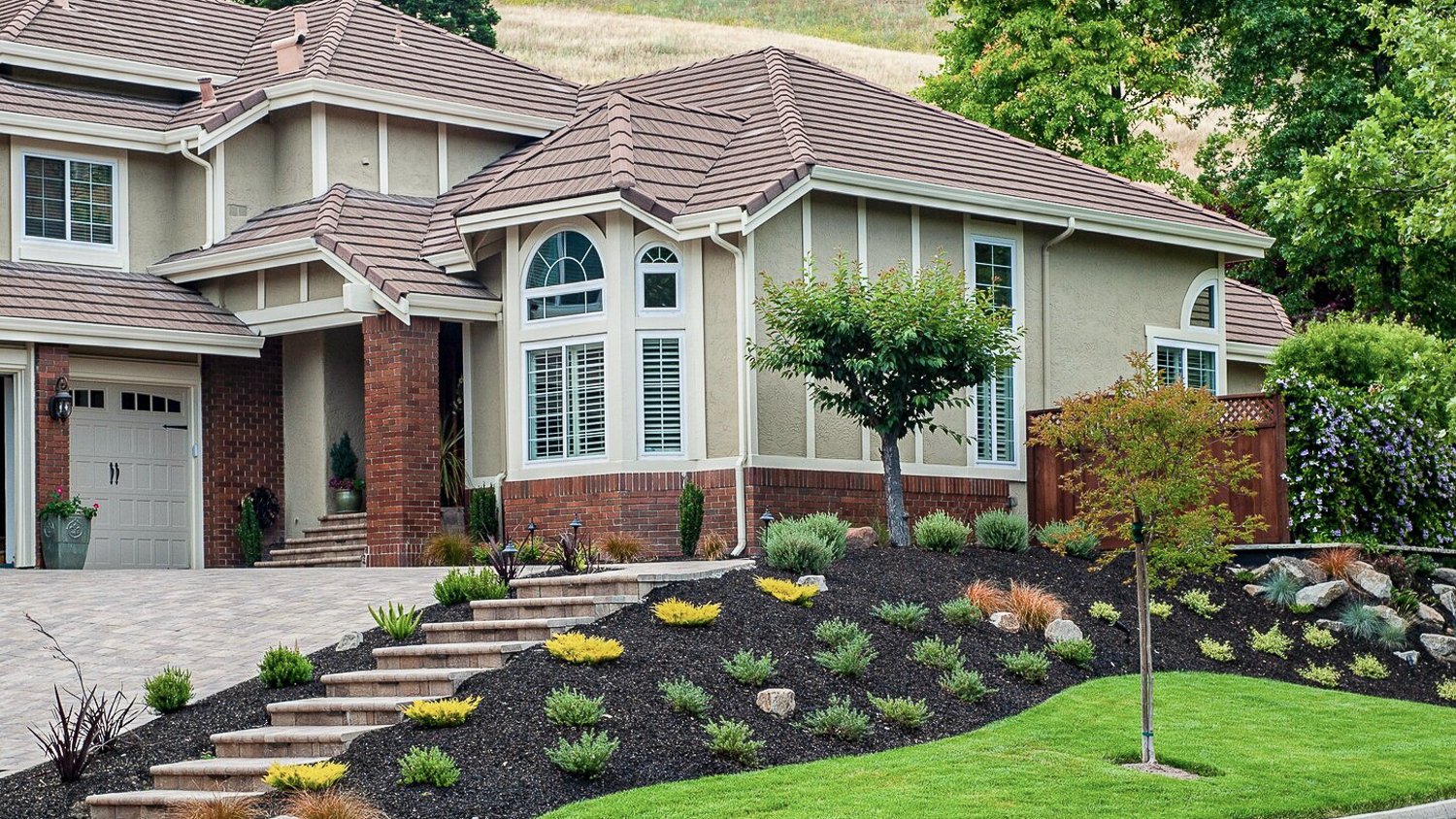
Gardening on a slope is one of the best ways to prevent erosion and keep all the rainwater from rushing into the street with your flowers in tow. Choose plants that grow well on slopes and keep them contained with the support of stone, metal, or plastic edging. The extra layer of support will keep the base of the hill intact, particularly in areas where mulch and your lawn meet. Speak with your local landscaping pro when considering which edging materials are best for extreme slopes.
5. Year-Round Interest With Ornamental Grasses

If you’re looking to add a more natural, softer feel to your garden edges, why not consider planting low-maintenance ornamental grasses? And if you pick wisely, they’ll provide lovely year-round interest. Henry planted around 20 divisions of a single Japanese sweet flag (Acorus gramineus) clump. A few years later, they have filled out perfectly!
6. Blend With Landscape Stones

If you've chosen to line the edge of your garden with a rock perimeter, extend the rugged look into the rest of your flower beds. Landscape stones include everything from natural slate walkway stones to white crushed marble. Extending a rock garden beyond your stone edges encourages drainage and discourages weeds from making the leap over the barrier.
7. Hydrangea Hedging

Christiane Zorenkov’s country house garden is elevated by the standout cobbled pathway edging. The large and impressively long-blooming Annabelle hydrangeas (Hydrangea arborescens 'Annabelle') can flower for up to two months in the summer and sometimes even bloom again in the fall. The foliage provides year-round interest, and they’re a great choice for partial shade locations. Here, they are supported by easy-to-care-for boxwood hedging.
8. Blended Border Edging
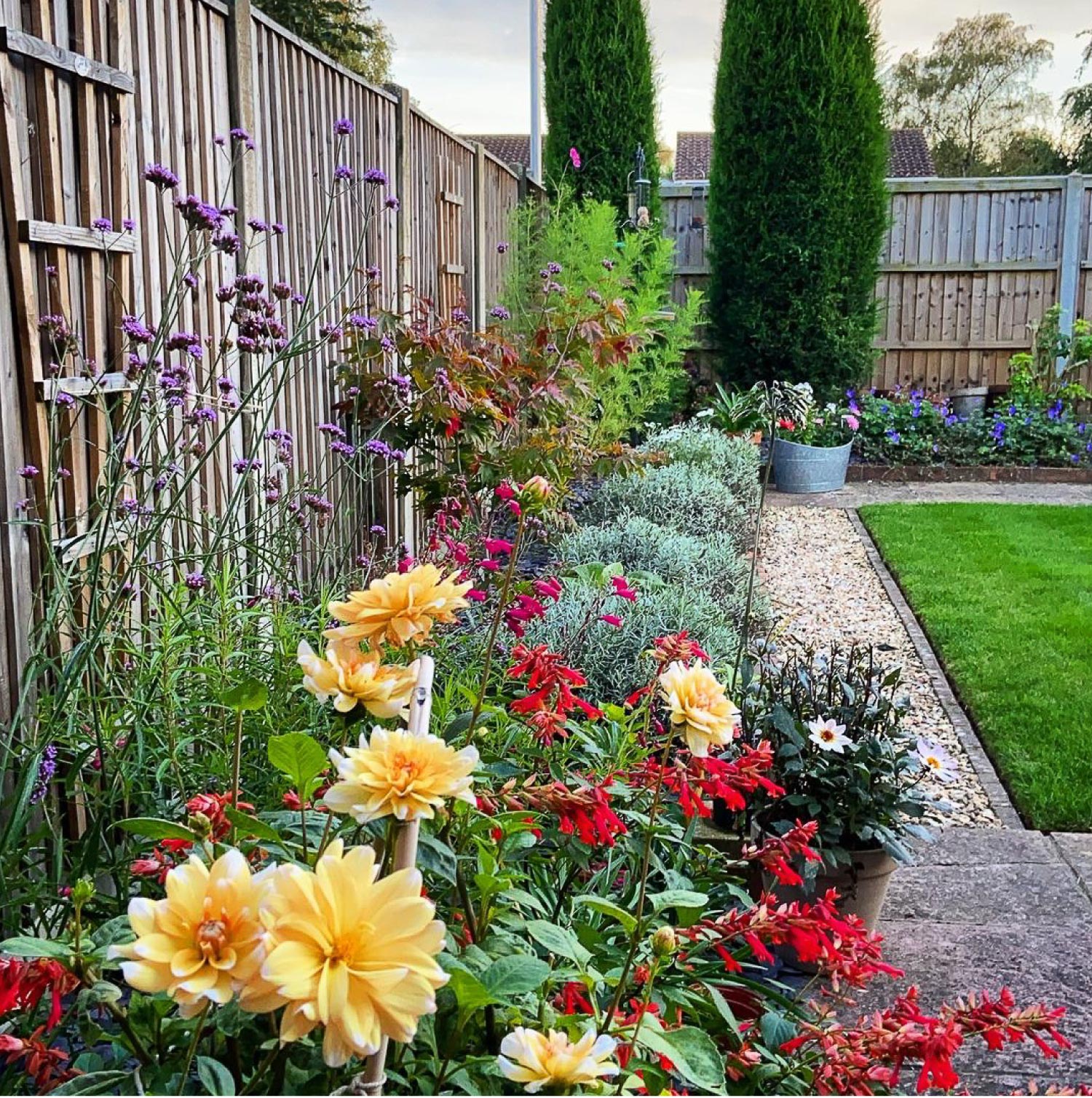
The casual, colorful, mix of pollinator-friendly perennials in this garden border idea from Jo Williams may look unplanned, but it provides interest throughout the year. The additional pebble edging adds extra contrast against the lush, green lawn. This type of landscape edging requires more planning and maintenance than some, but the rewards make the effort worthwhile.
9. Drainage-Friendly Edging
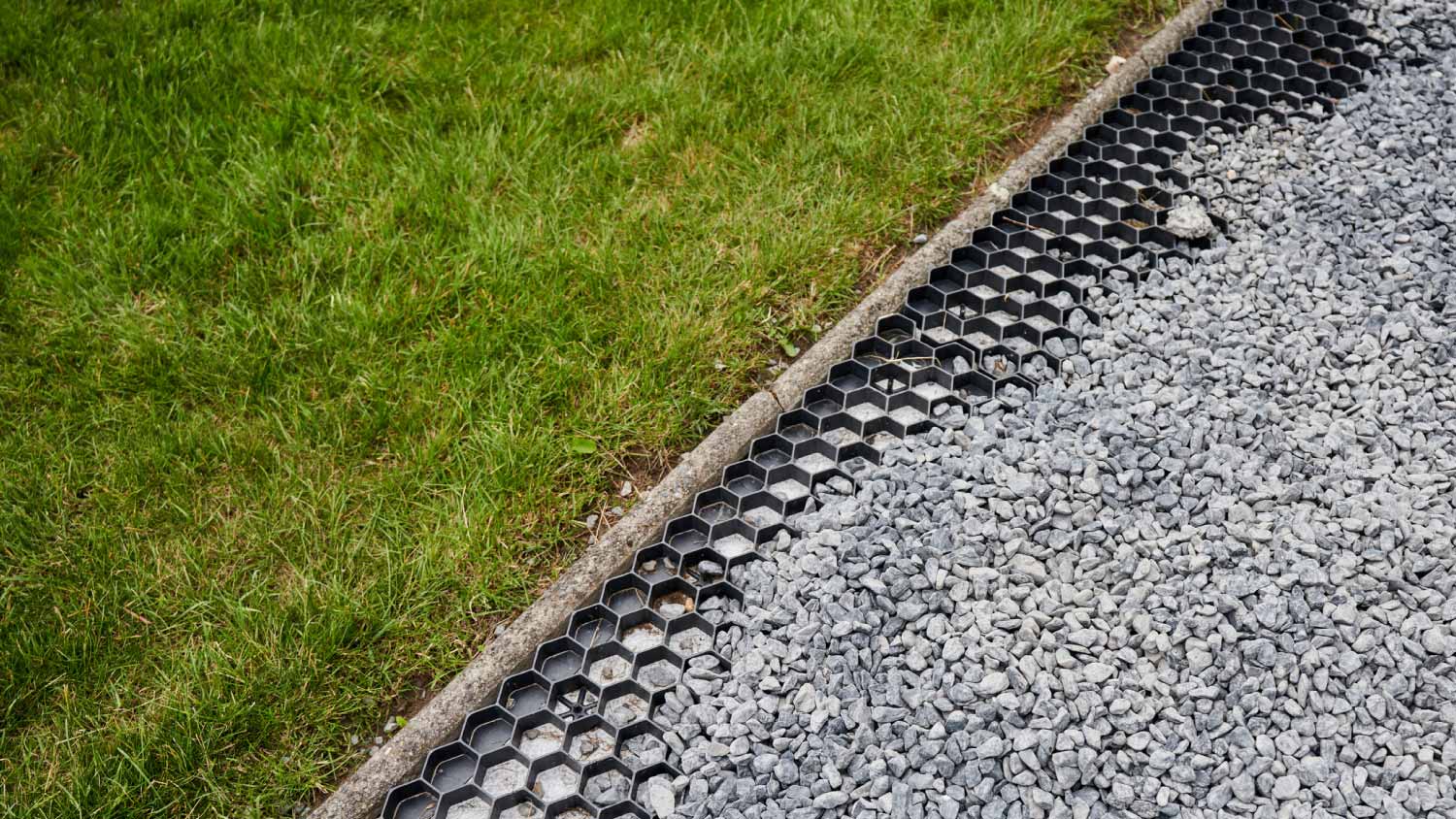
Adding edging to any area of your landscape affects how water flows from space to space. If you're concerned about water pooling in your edged-in area—which is never a good thing—remember to add permeable barriers below the top layer to let water flow naturally into the ground. For example, plastic grids below gravel add stability and also assist with drainage. You can also consider grass paver blocks or permeable pavers.
10. Retaining Wall Gardens
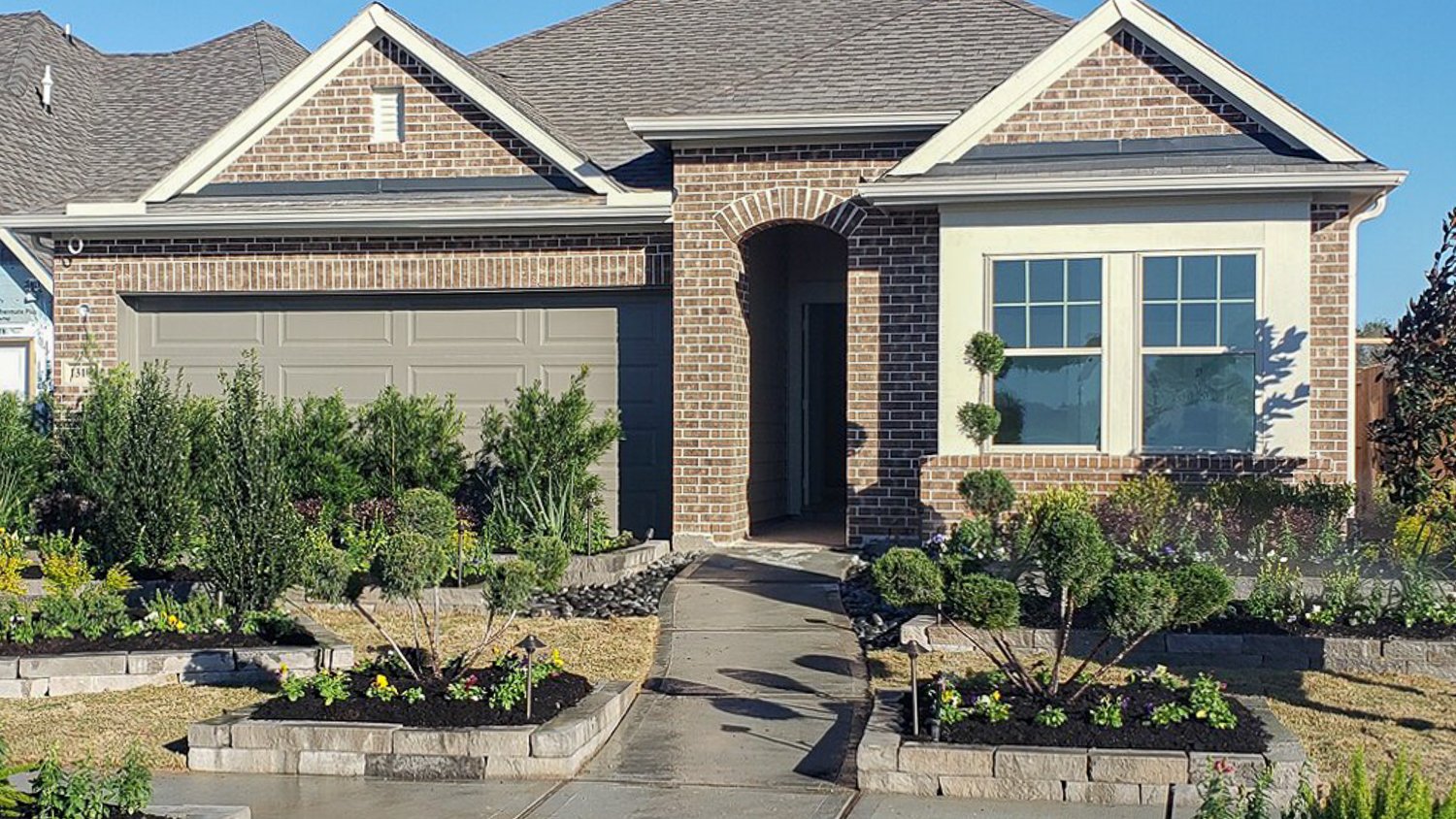
What's the middle ground between edging and retaining walls? Low stone, wooden, or metal walls serve several purposes, including keeping the outside of your garden looking tidy. Retaining walls cost between $5 and $10 per linear foot, and low walls such as these can double as raised flower beds. Keep the design in mind if you're designing a low-irrigation landscape that doesn't require excess water.
11. Brick Edging

A brick-edged flower bed, like this one from Lucy Taylor Garden Design, is a low-maintenance, durable, and uniform option that comes in a variety of finishes. You won’t need to worry about manually finishing your lawn edging, and bricks provide a clear border definition. If you’re looking to garden sustainably, it's often possible to source reclaimed bricks from salvage yards.
12. Raised Beds

Hannah Wood’s stylish renovation of her 1857 Victorian terrace extends to her backyard. This garden edging idea combines reclaimed bricks and planters made from old sleepers with standout, tall ornamental alliums that beautifully contrast with the modern, unobtrusive black fencing.
13. Concrete Curves
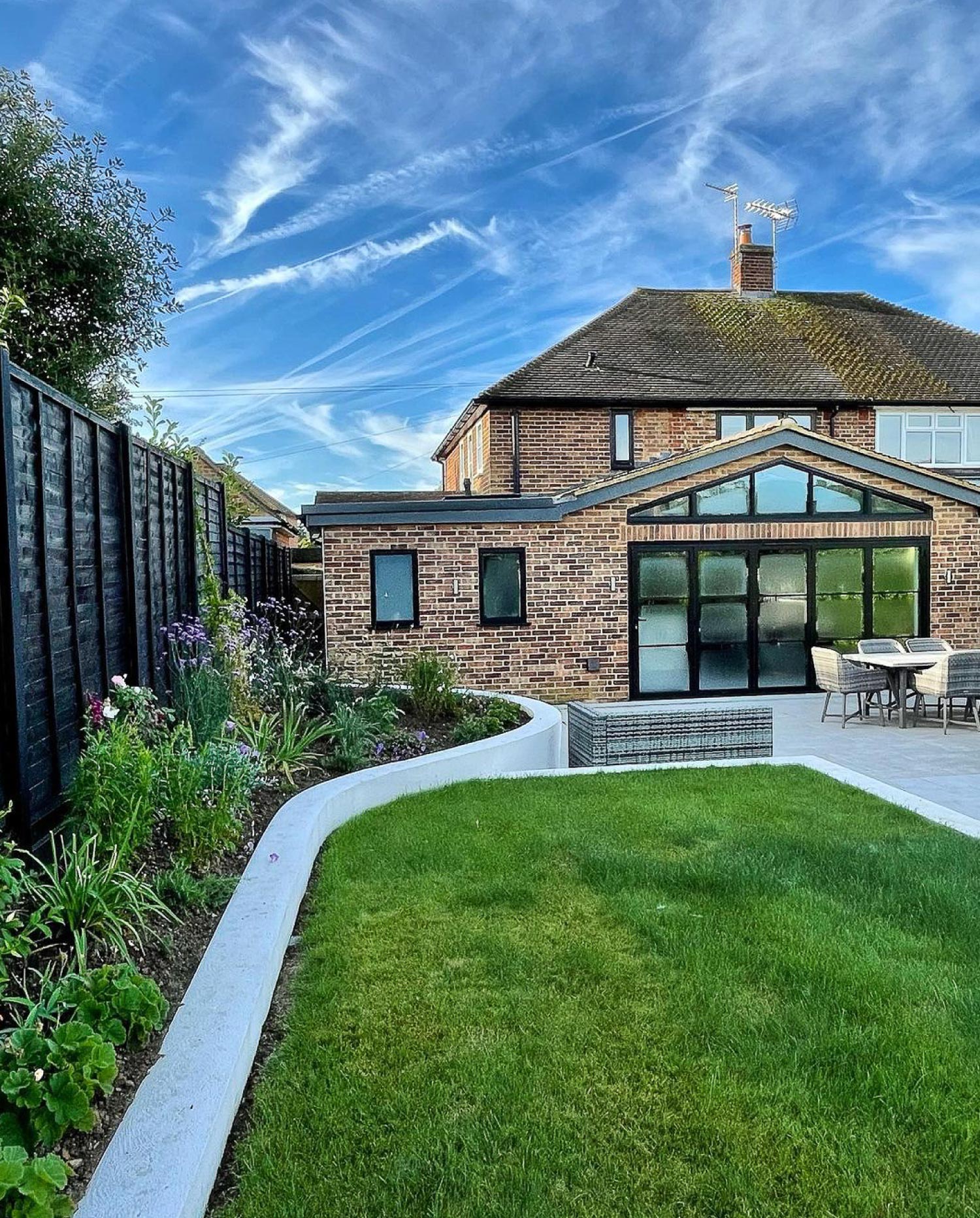
The clean lines of the rendered wall edging complement the mid-century modern architecture of Helen Wilder’s 1950s renovated semi. In addition, the raised bedding provides depth, texture, and interest against the contrasting fencing. The edging also blends perfectly with the durable, low-maintenance, easy-to-clean porcelain patio pavers. The cost of landscape curbing ranges between $15 and $20 per linear foot, though you may pay higher rates for concrete edging that raises up like a retaining wall such as these.
14. Play Up Your Pathway

The curved centerpiece pathway with brick edging in Tania’s garden accentuates the lush lawn and mixed borders containing various perennial plants, shrubs, and ornamental grasses beautifully.
15. Eclectic Edges
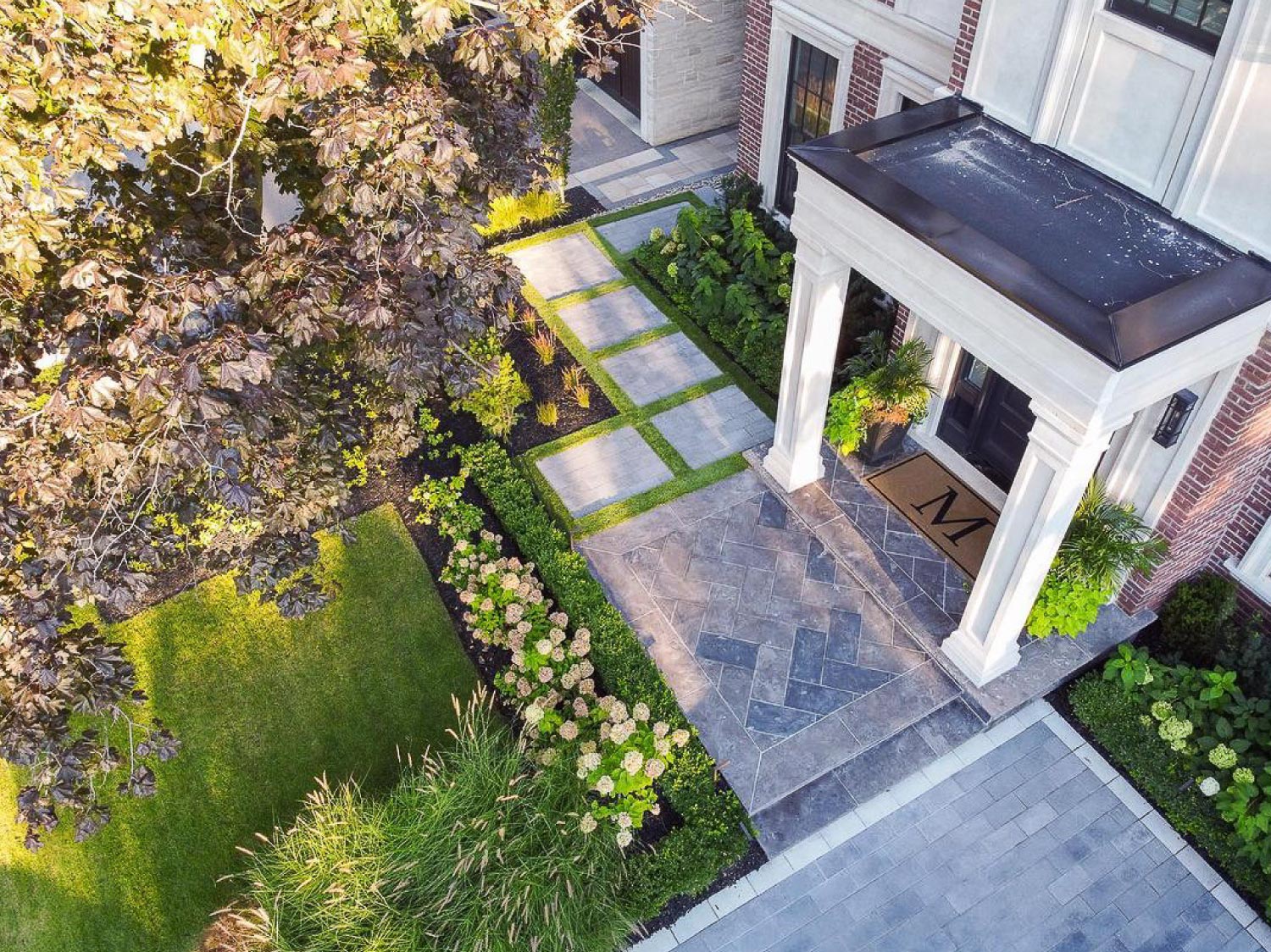
Taylor-Amey Design Inc. has incorporated various edging ideas into this modern landscape design. The clean lines of the boxwood hedges, the depth, and texture of the ornamental grasses, the well-defined lawn borders, and the color of the flowering shrubs all come together cohesively. After the landscapers have left, learn how to edge your flower beds and maintain a clean look before visits from the professionals.
16. Keep It Classic

Lawn care specialist Project 31 illustrates why sometimes traditional and simple garden edging styles work best. This lush expanse of lawn is the star of the show, complemented by unobtrusive, neat wood edging and a pebble border. Some planters and a raised flower bed add additional interest without being unnecessarily flashy.
17. Contain With Mulch
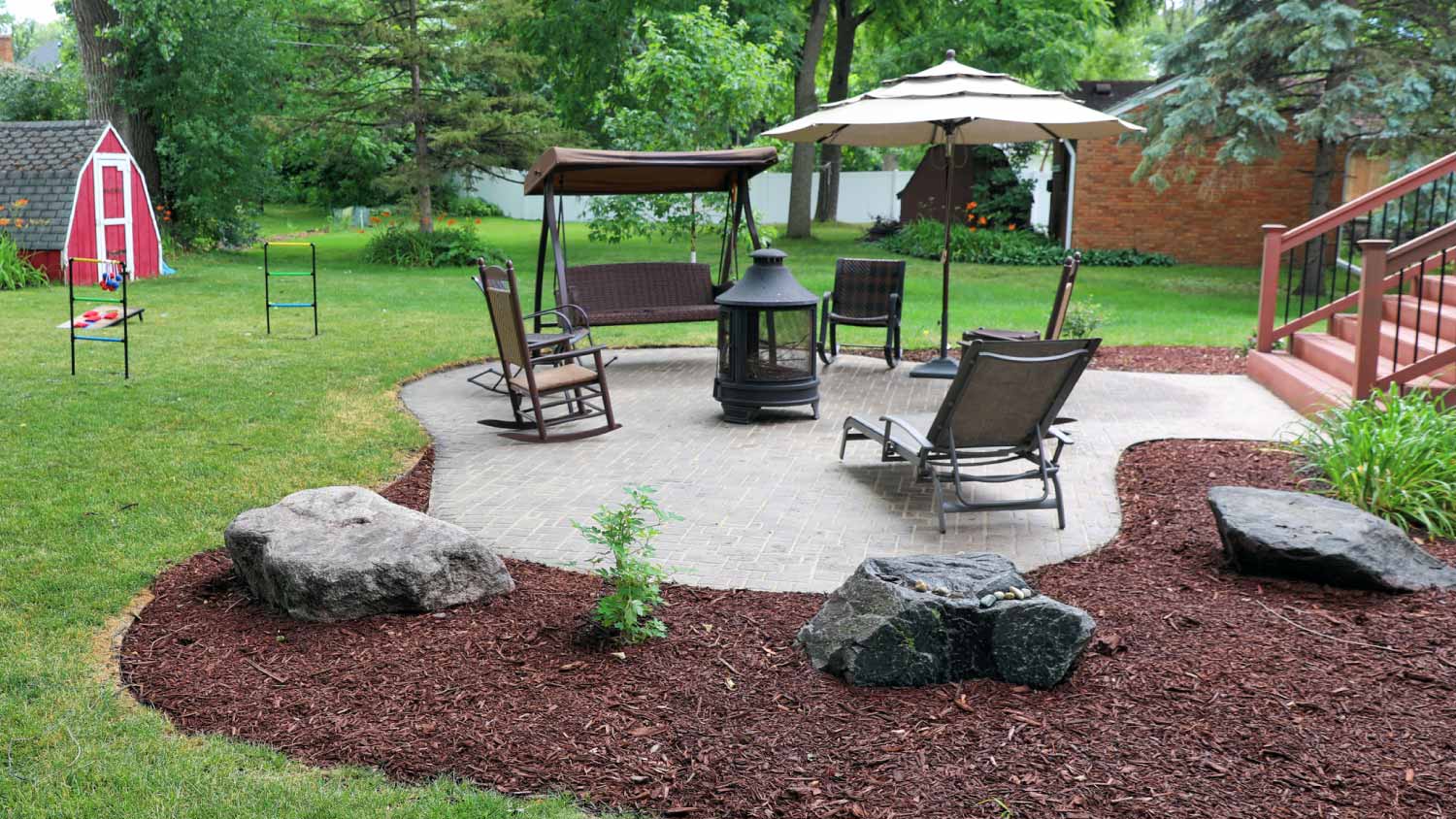
Mulch can be the star of the landscape show when used correctly. Consider either organic or inorganic mulch—from wood chips to stones—to differentiate your flower beds from your lawn. While mulch can act as a natural edging tool to keep the two areas separate visually, installing plastic edging can add extra support as well. Plastic edging is one of the most DIY-friendly options and pairs with all types of mulch.
18. Landscape Timber Flower Beds
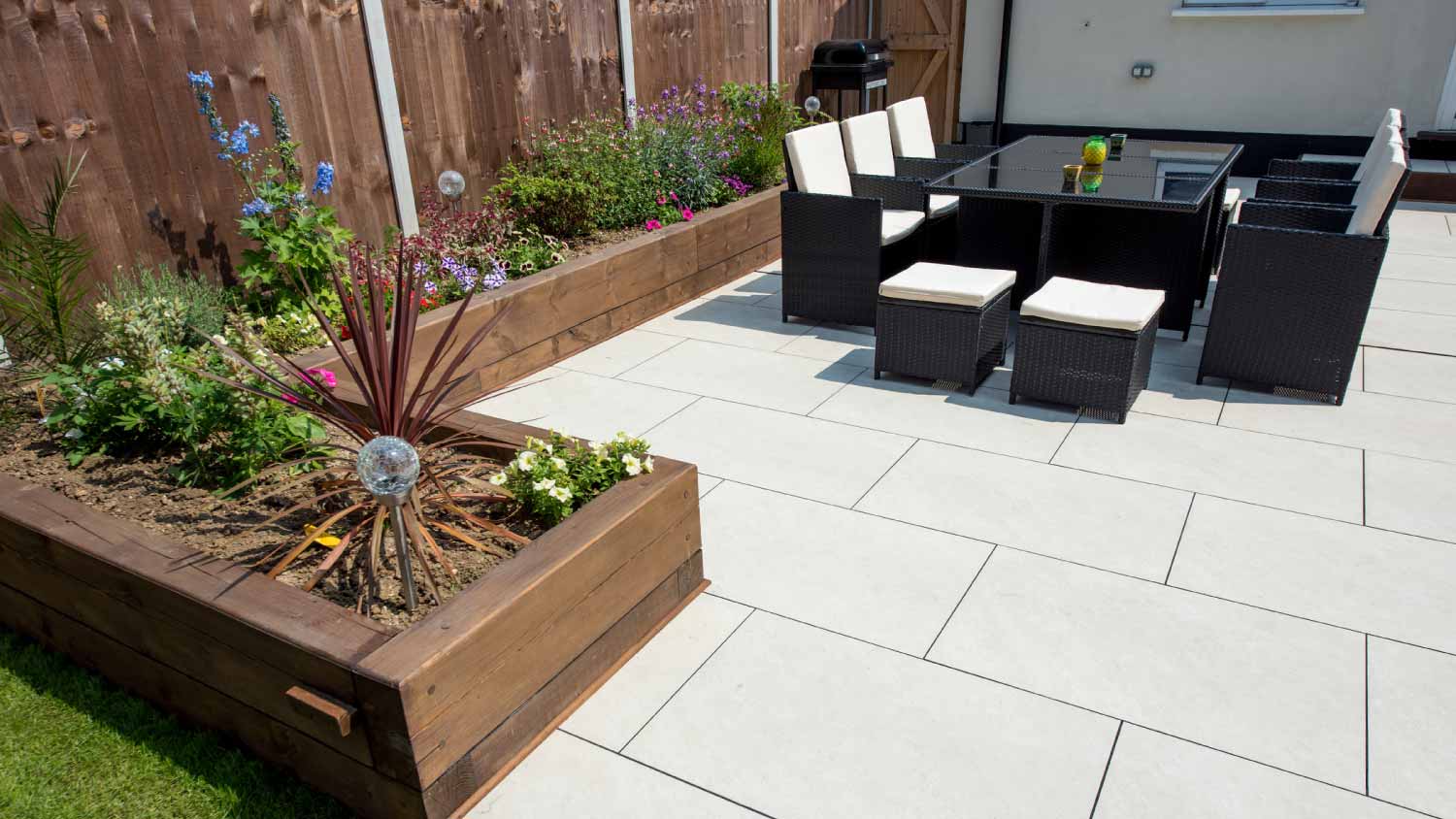
Curious about how to install landscape timbers and create new gardening opportunities? Building upwards with strong wooden timbers offers more space to plant flowers and even veggies with deep roots. It also gives your plants more of a fighting chance against runoff, burrowing animals, and wandering weeds. Surround your backyard seating or dining area with raised timber flower beds to enjoy your hard work every time you head outside to wind down.
Gemma Johnstone contributed to this piece.





- Landscapers
- Tree Surgeons
- Gardening Services
- Landscape Architects
- Sod Installation
- Tennis Court Contractors
- Landscape Design
- Retaining Wall Companies
- Grading Companies
- Landscape Rock & Sand Delivery
- Mulch Delivery Services
- Pond Companies
- Artificial Grass Companies
- Shrub Removal & Trimming
- Backyard Design Companies
- Commercial Landscaping
- Koi Pond Services
- Backyard Landscapers
- Trampoline Assembly
- Hedge Trimming
- Pond Services
- Garden Design
- Outdoor Plant Watering
- Putting Greens
- French Drains
- Turf Installation
- Sod Removal Services
- Lawn Repair Services
- Brush Chipping Services
- Hardscape Contractor
- Landscape Rock Removal
- 8 Different Types of Landscape Edging for a Clean Look
- Hold It Right There: 5 Options for Artificial Grass Edging
- 10 Easy Ways to Beautify Your Backyard
- 47 Landscaping Ideas to Consider for Your Home
- 27 Creative and Beautiful Flower Bed Ideas
- 41 Backyard Landscaping Ideas for Next-Level Outdoor Living
- 21 Front Yard Landscaping Ideas to Boost Your Curb Appeal
- 13 Creative Landscape Designs for Small Spaces
- Who Do I Hire to Edge My Yard?
- 18 Low-Maintenance Landscaping Ideas















